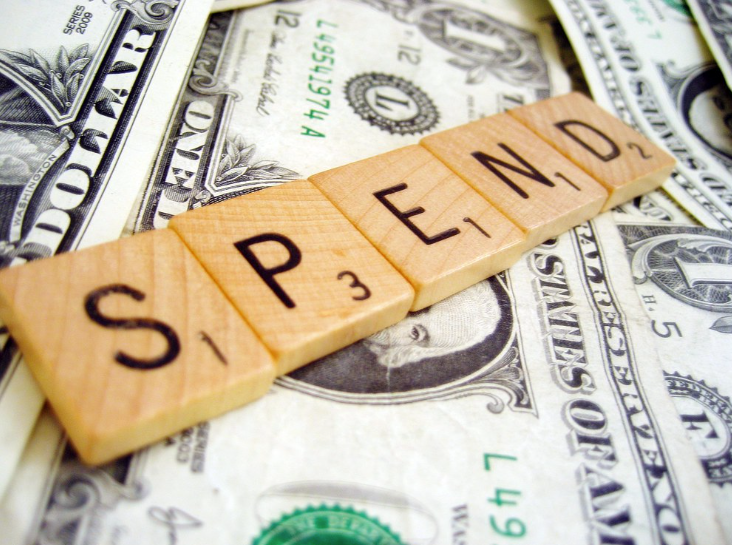As 2025 draws to a close, American consumers are feeling the squeeze like never before, with sentiment hitting a three-year low and spending habits shifting dramatically. This isn’t just bad news for shoppers, it’s a red flag for the economy and investors alike. But why now, and what hidden opportunities lie ahead? Dive in to uncover the forces at play and how they could reshape your portfolio.
The Squeeze on Everyday Spenders
Consumer spending challenges in 2025 have escalated, driven by stubborn inflation and a cooling job market. The University of Michigan’s latest survey shows sentiment plunging to its lowest point since 2022, reflecting widespread worry over rising costs and uncertain incomes.
Low and middle-income families are hit hardest. Fast-casual spots like Chipotle report fewer visits from their core 25 to 35-year-old crowd, who are cutting back on extras to make ends meet. Even in staples like cigarettes, smokers are switching to cheaper options, as noted by industry leaders, with discount brands gaining a 2.4 percentage point market share boost this year.
This shift signals deeper economic strain, where everyday Americans are prioritizing basics over luxuries. Job growth has stalled, with layoffs spiking in October according to recent reports. Without steady employment gains, many households are dipping into savings or racking up debt, pushing credit card defaults to levels not seen since 2010.
The numbers paint a stark picture. Real consumer spending fell 0.15 percent in the first half of 2025, the sharpest drop outside the 2020 pandemic in 15 years. That’s a big deal because spending drives about 70 percent of U.S. GDP.

Ripples Through the Economy
These consumer spending challenges in 2025 aren’t isolated, they’re rippling out to drag on overall growth. GDP estimates for the year have been revised downward, with some forecasts now pegging annual expansion at just 1.4 percent amid tariff uncertainties and shutdown fears.
Sectors like retail and apparel are suffering. High-end brands in footwear and clothing have seen U.S. sales growth slow sharply, as buyers trade down or skip purchases altogether. On the flip side, travel remains a bright spot. Companies in cruises and airlines report record demand, fueled by higher-income folks who can still afford vacations.
The divide between income groups is widening, creating a tale of two economies. Lower earners are pulling back, while the wealthy keep spending on experiences like trips. This split could worsen if labor woes persist, potentially tipping the U.S. into a slowdown.
Inflation’s lingering bite adds fuel to the fire. Household costs for essentials like housing have climbed, eating up over 50 percent of rising expenses in many cases. Recent Federal Reserve rate cuts offer some relief, but experts warn it’s a mixed bag, possibly sparking more borrowing without fixing core issues.
Here’s a quick look at key economic indicators affected:
- Consumer Sentiment Index: Down to 50.3, a near-record low.
- Job Growth: Flat in recent months, with October layoffs surging.
- Spending Decline: 0.15 percent drop in real terms for first half of 2025.
- Credit Card Debt: Hit a record $5.01 trillion in April 2025.
Investor Plays in a Shaky Market
For investors, these consumer spending challenges in 2025 mean rethinking strategies as the stock market hovers near all-time highs. While broad indices like the S&P 500 have climbed, underlying weaknesses could trigger pullbacks if consumer pain spreads.
Defensive stocks might shine. Discount retailers, positioned to gain from trading-down trends, could see boosts. One example is chains with vast store networks that thrive in tough times, posting same-store sales jumps during past recessions.
Countercyclical businesses offer a hedge against downturns. During the Great Recession, some discounters saw sales surge by 9 percent or more annually. Today, with valuations like price-to-earnings ratios around 16.5, these could be bargains if economic headwinds intensify.
| Sector | Current Trend | Potential Impact on Investors |
|---|---|---|
| Retail Discount | Gaining share as consumers cut costs | Higher revenue in slowdowns, stable dividends |
| Travel and Leisure | Strong demand from high earners | Resilient growth, but vulnerable to broader recession |
| Apparel and Dining | Slowing sales growth | Stock volatility, possible undervalued buys on dips |
| Overall Market | Record highs despite consumer woes | Risk of correction if spending drops further |
Diversify into areas less tied to discretionary spending, like essentials or global plays. Watch for earnings reports in coming weeks, which could confirm or ease these trends.
Travel stocks, buoyed by robust bookings, provide balance. Yet, if job losses mount, even this sector might falter, urging caution.
Navigating Uncertainty Ahead
Policy moves add layers of complexity. Anticipated interest rate adjustments in late 2025 could ease borrowing costs, potentially sparking a spending rebound. But tariffs and trade shifts might raise prices, squeezing budgets further.
Generational shifts play a role too. Younger consumers, facing high housing costs, are opting for practical choices over splurges, reshaping retail landscapes.
Experts predict a tepid holiday season, with early shopping and value hunting dominating. This could test companies reliant on year-end boosts.
In wrapping up, the mounting challenges to consumer spending in 2025 highlight a fragile economy where everyday pressures are testing resilience, yet pockets of strength offer hope for savvy investors. From plunging sentiment to sector divides, the story underscores the need for vigilance in portfolios. What do you think, is this the start of a bigger slowdown or just a bump in the road? Share your views in the comments and pass this article along to friends on social media. With #ConsumerSpending2025 trending on X and other platforms amid heated discussions, join the conversation and tag your shares to keep the dialogue going.
































